Vogue Vets & Wellness Centre Services
Orthopaedic Surgeries including TPLOs, Patellar luxations and Fracture Repairs
Orthopaedic surgeries
Cruciate Disease in cats and dogs is a common orthopaedic issue that often requires surgical intervention. It involves the cranial cruciate ligament (CCL) in the knee, which may fray or rupture. This ligament forms an “X” within the stifle (knee) joint, crossing the caudal cruciate ligament. Its role is to prevent the tibia (shin bone) from moving forward relative to the femur (thigh bone) when weight is placed on the leg.
When the CCL tears or frays, the tibia moves forward in relation to the femur, a condition known as a positive drawer sign. This causes instability in the knee joint, resulting in pain and difficulty walking. Over time, the instability leads to damage to the cartilage and surrounding bones, which eventually causes osteoarthritis (OA).
Read More
Top 5 Symptoms of Cruciate Disease
1. Lameness:
Lameness can occur suddenly when the weakened ligament gives way during activity, causing severe discomfort. Alternatively, it may develop gradually, with intermittent lameness that worsens with increased activity and improves with rest.
2. Sitting Abnormally:
Affected pets may sit or lie with the leg sticking out to the side, as it’s painful to bend the knee.
3. Stiffness in Both Back Legs:
Although one leg is typically affected first, about 50% of animals with CCL injury will develop a similar problem in the other leg within 12 months. If both knees are affected simultaneously, the pet may appear stiff, have difficulty walking, or may not be able to get up.
4. Knee Thickening/Swelling:
Inflammation from the injury leads to swelling in the knee, which may result in visible thickening of the joint over time due to scar tissue.
5. Clicking:
When the knee is unstable, the meniscus (a cartilage structure in the joint) can tear or become injured, causing an audible “click” while walking. Meniscus injuries are painful and often accompany significant lameness.
Diagnosis and Management
If cruciate disease is suspected, a thorough examination under sedation or anaesthesia may be necessary to assess joint instability. Advanced imaging, such as x-rays, can help confirm the diagnosis and reveal early signs of cruciate disease. Our digital x-ray system allows detailed imaging of soft tissue structures, helping us to detect signs of ligament damage before a complete rupture occurs.
Surgical intervention is generally recommended for most pets to prevent irreversible joint damage and relieve pain. For dogs over 15kg, surgical procedures are designed to alter the tibial bone structure, thereby eliminating the need for the cranial cruciate ligament.
Surgical Options for CCL Repair
1. Extracapsular Cruciate Repair:
This traditional technique is highly effective for smaller dogs (under 15kg). It involves placing an artificial nylon ligament outside the joint capsule in the same orientation as the CCL. This stabilizes the knee and prevents excessive forward movement of the tibia. The procedure involves removing any damaged tissue, including portions of the CCL and meniscus, before placing the stabilizing suture.
2. TPLO Surgery (Tibial Plateau Leveling Osteotomy):
For larger dogs (over 15-20kg), an extracapsular repair is less effective due to the higher risk of the artificial ligament failing underweight. TPLO surgery involves making a curved cut in the tibia to adjust the angle between the tibia and femur, neutralizing shearing forces on the knee. A locking plate and screws are used to stabilize the bone. TPLO requires careful pre-operative planning, specialized equipment, and expertise, and is available at our clinic.
Other Considerations
Choosing the best surgical approach depends on multiple factors, including breed, size, activity level, and the expertise of the surgeon. Other considerations include the slope of the tibial plateau and any concurrent medical conditions your pet may have. Our veterinary team will provide guidance in choosing the best treatment plan for your pet, ensuring optimal recovery.
Additionally, we also offer a variety of orthopaedic surgeries for conditions such as Medial Patellar Luxation (MPL) and fracture repairs, designed to restore your pet’s mobility and quality of life. Each surgery type is carefully tailored to meet the specific needs of your pet, with comprehensive post-operative care for the best possible outcomes.
Vet Dentistry
Veterinary Dentistry Services at Vogue Vets
How Does Dental Disease Affect My Pet?
Over 70% of cats and 80% of dogs over 3 years old suffer from dental disease. This is characterized by plaque, tartar (calculus), and gum infection (gingivitis). If left untreated, dental disease can lead to pain, inflammation, and irreversible damage to the structures supporting the teeth, including bones, gums, and ligaments.
Read More
Common Symptoms of Dental Disease:
- Bad Breath (Halitosis): The most common cause of foul-smelling breath in pets.
- Reluctance to Eat Hard Food: Pets may avoid hard food or drop it due to dental pain.
- Facial Swelling: Abscesses on large molars can cause painful swelling.
- Drooling or Red Gums: Infected gums may cause drooling or pain.
- Weight Loss: Pain may prevent pets from eating, leading to weight loss.
Why Can’t My Pet’s Teeth Be Cleaned While Awake?
Dental cleaning requires the removal of plaque and tartar below the gumline, where infection begins. Cleaning while awake may damage teeth, leading to further deterioration. We use ultrasonic scalers and polishers to carefully clean and polish each tooth, preventing additional harm and effectively managing the disease.
Consequences of Dental Disease:
Untreated dental disease can lead to pain, infections, and complications beyond the mouth, including heart disease, kidney and liver issues, and even a shorter lifespan due to the spread of bacteria into the bloodstream.
Dental surgery:
Dental surgery is typically a day procedure. Prior to anaesthesia, animals undergo a full blood work panel to ensure they are healthy enough for the procedure. The animal is then placed under anaesthesia, and full-mouth dental radiographs are taken. After reviewing the x-rays, a full mouth scale and polish is performed. If extractions are necessary, they may be scheduled for another day to ensure your pet’s safety. Each case is unique, and the veterinarian will make decisions based on your pet’s specific needs.


Desexing
Castrations and Sterilizations
At our clinic, we offer professional desexing services for both male and female pets. The procedure is a day surgery, and your pet will be able to go home the same day. While desexing can be performed from an early age, we generally recommend waiting until your pet is at least 5-6 months old for the best health outcomes. Pre-aesthetic blood work is optional but recommended to ensure your pet’s health and safety during anaesthesia.
Read More
We use dissolvable sutures, so there’s no need for removal after the procedure. To ensure your pet’s comfort and safety during recovery, they will be sent home with an Elizabethan collar and pain medication. Our team will provide you with all the necessary aftercare instructions to support your pet’s healing process.
If you have any questions or would like to schedule a consultation, feel free to contact us!
Soft tissue Surgery
General soft tissue surgery
At our clinic, we offer a wide range of small animal soft tissue surgeries designed to treat various conditions and improve your pet’s quality of life. Soft tissue surgeries include procedures on the skin, muscles, internal organs, and other soft structures in the body. Whether it’s for routine procedures like mass removals or more complex surgeries such as abdominal or thoracic surgeries, our skilled veterinary team is here to provide the highest level of care.
Read More
Our experienced veterinarians use advanced techniques and equipment to ensure the best outcomes for your pet. We take a personalized approach to each case, carefully planning the surgery and providing detailed aftercare instructions to support a smooth recovery.
If you have concerns about your pet’s health or would like to learn more about soft tissue surgery options, please contact us to schedule a consultation. We’re committed to keeping your pet healthy and comfortable every step of the way.
Hydrotherapy
Hydrotherapy is the use of water to assist animals in regaining muscle strength & resilience under controlled circumstances. Studies have shown that animals undergoing hydrotherapy after injury or surgery recover quicker & have an increased range of motion than those without. Hydrotherapy is also a great cardiovascular workout and can assist with weight loss for those patients suffering from weight management issues.
Read More
Our State-of-the-Art Underwater Treadmill has a few features that make it special:
* An extremely low entry/exit design, making it even safer & easier for your animal to get in & out
* 2 doors so your pet doesn’t have the stress of having to turn around to exit the treadmill
* Incline feature to increase resistance
* Temperature control to ensure that the water is at the best therapeutic temperature for your pet
How does Therapeutic Hydrotherapy differ from Swimming?
Therapeutic Hydrotherapy in the treadmill is partially weight bearing and involves greater active flexion and extension (mobility) of the joints. Treadmill training does not involve kicking movements, which is safer for post op cruciate rehabilitation. Water depth can be easily altered to increase/decrease the workload as needed by the patient. Temperature controlled water ensures therapeutic temperatures to assist in pain relief and reduce unnecessary fatigue from dogs getting too cold. Therapeutic hydrotherapy videography is used to enable our physio to assess gait and compare gait alterations over the period of treatment.
Physio & Therapeutic Exercise
Physical therapies are designed to improve pain, core strength, mobility & quality of life while decreasing reliance on conventional medicines
The two main purposes of Animal Physio are:
1) Physical Rehabilitation, which addresses injuries or mobility issues that have already occurred
2) Fitness & Wellness, which aims at improving function and performance, whilst preventing injuries by providing personalised strengthening and Fitness programs.
Read More
Physio treatments are provided through:
- Various pieces of equipment, such as neuromuscular stimulators (TENS machines), lasers, & electromagnetic beds
- Rehabilitation exercises which improve strength and balance
- Hydrotherapy
- & manual techniques such as massage
Phototherapy (Laser)
Laser Therapy is a non-invasive method for providing pain relief & treating inflammation either in conjunction with, or without, surgery & medications.
Laser treatment uses deep penetrating light to stimulate a chain of chemical reactions that result in decreased pain through release of endorphins, and accelerated healing through stimulation of injured cells.
Laser therapy can be particularly useful in helping animals to recover from: surgery; muscle/soft tissue strains/injuries; arthritis & back pain; ear infections; hot spots/dermatitis; anal gland issues & gingivitis.


Senior Mobility
Our Senior’s mobility program is designed to keep your senior pet strong, fit & mobile. This range of fun & gentle exercise programs will help keep the spring in your senior pet’s step!
Acupuncture and Traditional Chinese Medicine
We’re pleased to offer Acupuncture and TCM as services at our clinic. Our Qualified Acupuncture Vets will examine your pets to fully assess them from both a Western & Traditional Chinese Medicine perspective and decide what the most appropriate treatment regime will be.
Acupuncture is an ancient medical treatment and is probably one of the oldest forms of veterinary medicine in the world.
It involves placement of very fine needles into certain pressure points on the body, which then alters various body functions. One of its main uses is to provide pain relief for arthritis, spinal disease, & mobility issues such as hip dysplasia. It can be used alone, or in conjunction with conventional western medicine & surgery to achieve better patient outcomes.
